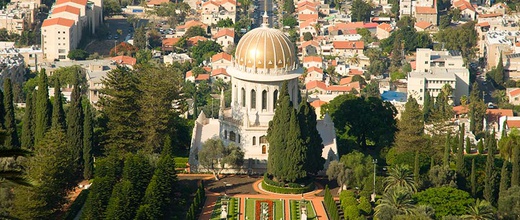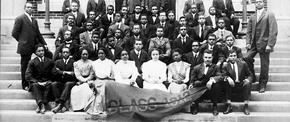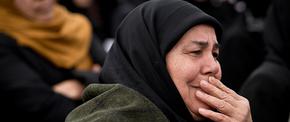The views expressed in our content reflect individual perspectives and do not represent the authoritative views of the Baha'i Faith.
In May of 1844, the Babi religion began—nine years before Baha’u’llah’s horrible incarceration in the infamous Black Pit.
A prophetic figure named Siyyid Ali-Muhammad proclaimed a revolutionary new Faith, through which a fresh cycle of human enlightenment would arrive. He took the title “The Bab,” which means “The Gate” in Arabic. Much like John the Baptist heralded the coming of Christ in an earlier time, the Bab brought a message of individual spirituality and an unfolding of social progress. Also, like the earlier prophet, he was eventually killed for his beliefs.
Tens of thousands soon joined the Babi Faith. The first eighteen people to recognize the Bab’s mission came to be known as “the Letters of the Living.” One of those first followers—a woman called Tahirih, also known as Qurrat u’l-Ayn, a spiritual and poetic genius—became an outspoken advocate of the new Faith, despite living in a time and place that maximized the oppression of women. In that period of Persian history, women wore veils to keep them hidden from men’s sight, and were not allowed to even converse with males outside their families.
During one Babi conference, Tahirih demonstrated the casting-off of the old traditions and humanity’s entrance into a new era of enlightenment. She did this by taking off her veil during the conference and revealing her face. This caused a violent reaction from some of the men there, unprepared to accept the emancipation of women as part of the social progress they advocated. Baha’u’llah defended her actions and gave her the title Tahirih (Arabic: the Pure One). Eventually executed by the Persian government along with most of the Babi leaders, Tahirih still ranks as one of Persia’s finest poets. Before she was killed, she is reported to have said, “You may kill me if you like, but you will never stop the emancipation of women.”
The Babi Faith rapidly attracted people from every sector of society: wealthy merchants as well as tradesmen, religious scholars and illiterates, women and men, people who hungered for an inner spiritual awakening, and those who thirsted for social revolution, as well.
Baha’u’llah became a proponent of the Babi movement at the age of 27, after reading some of the writings of the Bab. Although he sought no leadership role in the community, Baha’u’llah soon became widely recognized as one of its most distinguished supporters, a recognition that placed his life in danger. The Shah issued a death warrant against Baha’u’llah, even though his only crime was following a religion opposed by the state. The warrant expired, however, upon the sudden death of the king himself in 1848.
Becoming a Babi meant putting everything at risk: your life, your family, your property, the good graces of friends and relatives. Some clergymen preached from their pulpits that to murder a Babi and steal his property were acts of righteousness. Many from the largely uneducated masses sought their moment of glory in what became the blood sport of Babi killing. Baha’u’llah wrote, “Religious fanaticism and hatred are a world-devouring fire, whose violence none can quench.” – Epistle to the Son of the Wolf, p. 14.
In a few short years, thousands of Babi men, women, and children were tortured and killed. The government officials offered no protection to the Babis. Ruled by a shared power system of the Shah and the Islamic clergy, Persia’s twin governing forces had virtually unchecked power over human life. The brutal executions they ordered were so cruel and perverse that most Westerners, revolted by the public massacres of the Babis, resigned their positions and left the country. Others remained in their homes to avoid witnessing horrors such as men being beheaded, flayed, drawn and quartered, having molten lead poured down their throats or lit candles placed into carved-out holes of their flesh, or being shod like horses and forced to run through the streets.
Despite that horrible reign of terror, the Babi movement swept through Persia like wildfire, attracting nobles and commoners alike. The powers of the state and the mobs of fundamentalist fanatics violently tried to stamp out this fire anywhere they found it. As Baha’u’llah sat chained in the Black Pit, many other Babi leaders died terrible deaths. The Babi Faith, facing powerful opposition and religious genocide, finally was forced underground. In prison, Baha’u’llah felt a prophetic call to revive and direct this persecuted movement:
One night, in a dream, these exalted words were heard on every side: “Verily, We shall render Thee victorious by Thyself and by Thy Pen. Grieve Thou not for that which hath befallen Thee, neither be Thou afraid, for Thou art in safety. Ere long will God raise up the treasures of the earth—men who will aid Thee …” – Tablets of Baha’u’llah, p. 187.

















Comments
Sign in or create an account
Continue with Facebookor